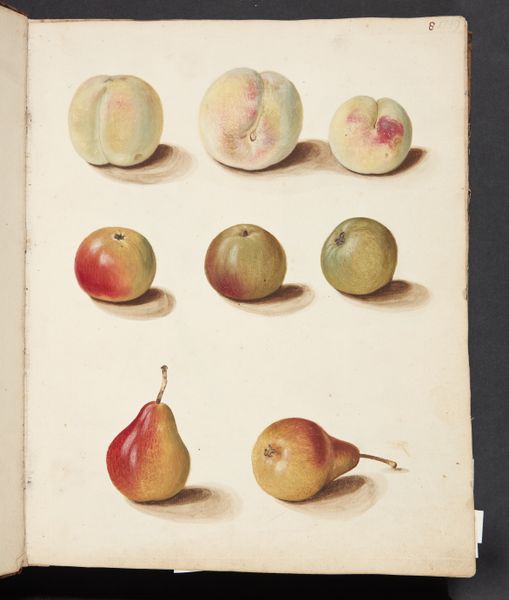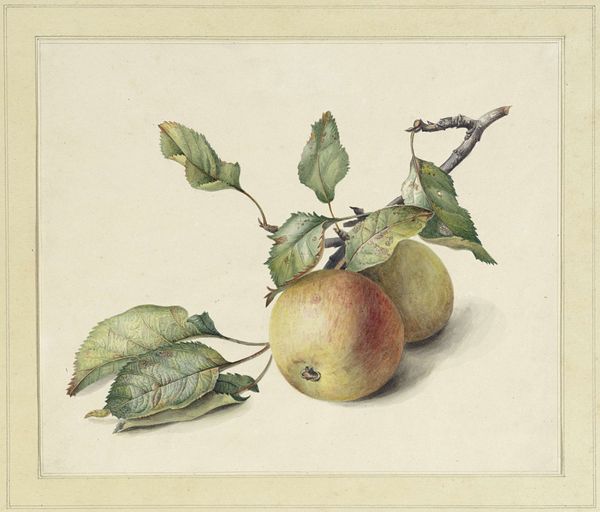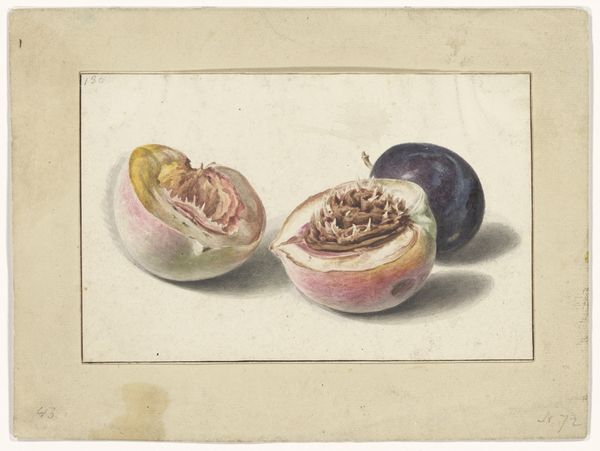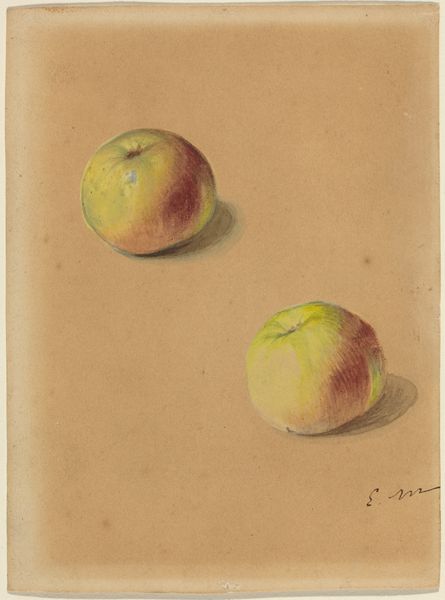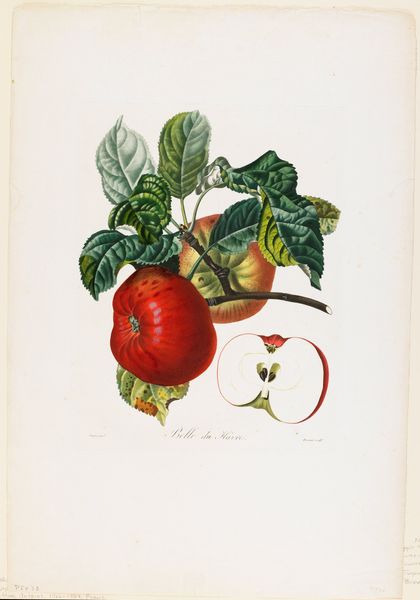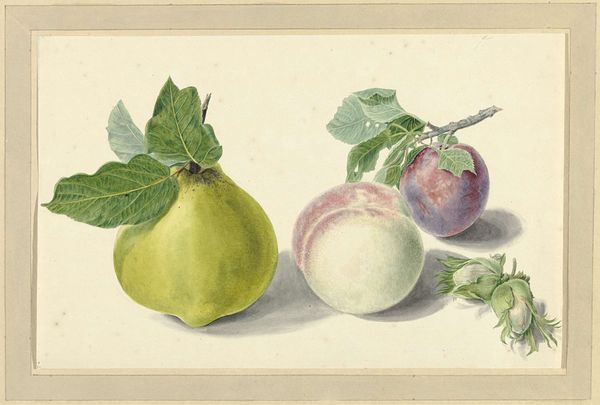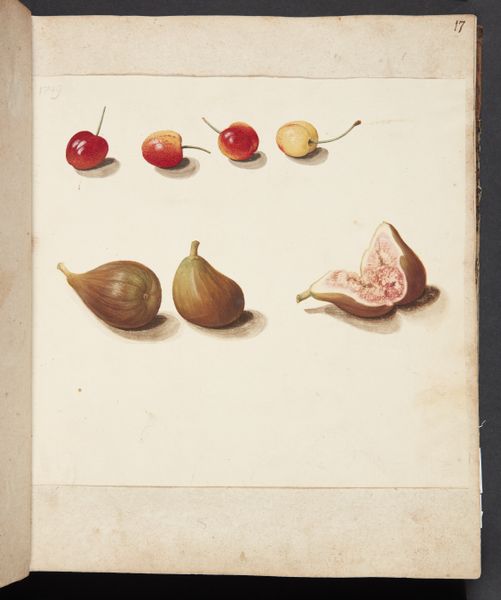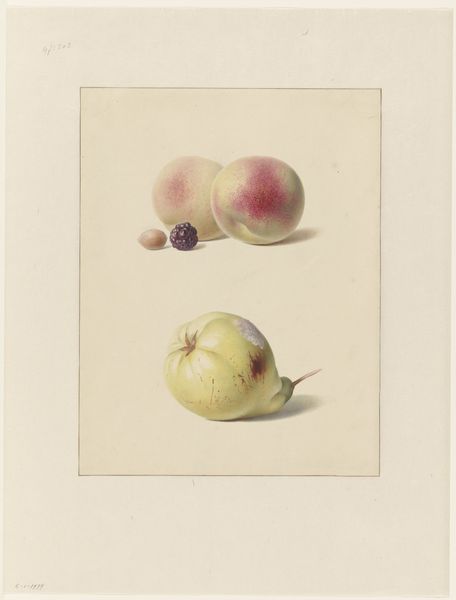
drawing, coloured-pencil, gouache, watercolor
#
drawing
#
coloured-pencil
#
water colours
#
gouache
#
watercolor
#
coloured pencil
#
underpainting
#
realism
#
rococo
Dimensions: 281 mm (height) x 227 mm (width) (bladmaal)
Curator: Well, hello there! Welcome to our little orchard of observation. What strikes you first about this 1751 piece, Studie af Æbler, a drawing rendered with colored pencils, watercolor, and gouache by Johanna Fosie? Editor: I’m immediately drawn to the simplicity. It feels intimate, almost like peering into a kitchen window and catching a glimpse of nature's everyday beauty. But it’s more than just pretty, right? Curator: Indeed! These apples aren’t merely fruits; they’re artifacts laden with symbolic weight. Throughout history, the apple has represented everything from temptation and knowledge to love and immortality. Fosie would have known that, living when she did. It’s as if she’s chosen a profound emblem of life itself. Editor: I can see that. The artist is imbuing such depth into rendering of light playing on their skins. There's also a feeling of nascent enlightenment in Rococo style: more realism, as if it were her effort to know the unknowable. Curator: Precisely! The style of the Rococo era encouraged her realism, a turn to documenting botanical forms precisely to participate in burgeoning scientific movement of classification and identification. Editor: It’s so fascinating how objects can morph from simple things into vehicles for complex ideas. Looking at it this way makes me think that an ordinary observer in the 1750s would perceive more philosophical undertones than what someone would extract now. Or are we missing layers in the work of artists like Fosie? Curator: Perhaps the beauty lies in the beholder’s interpretation as it transforms with each epoch! Each generation peels back new insights. What do these apples whisper to you in our present day? Editor: I keep coming back to the immediacy of it. These apples don’t pose; they just *are.* It is an exquisite capturing of that state of existence before they either ripen or begin to decay—so many of their connotations relate to choices made around those critical life cycle markers. Maybe it’s not about what the apple *represents*, but more a reflection on a specific moment of beauty, holding potential yet realized. Curator: You've illuminated it brilliantly! Thanks for peeling back new meaning here for me. Editor: And thanks for bringing historical layers to such delicious art. It makes one pause, reflect, and want a bite of something equally enriching.
Comments
No comments
Be the first to comment and join the conversation on the ultimate creative platform.
